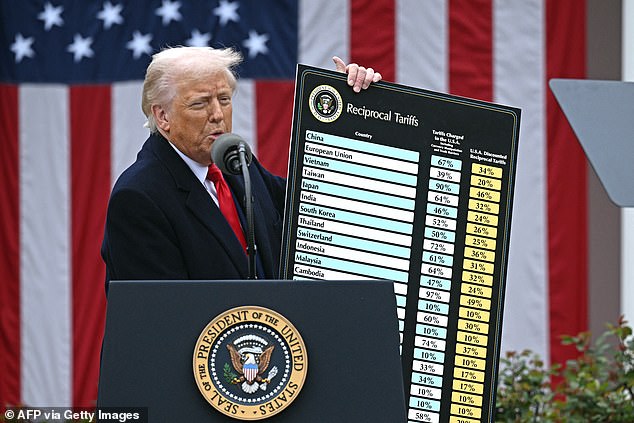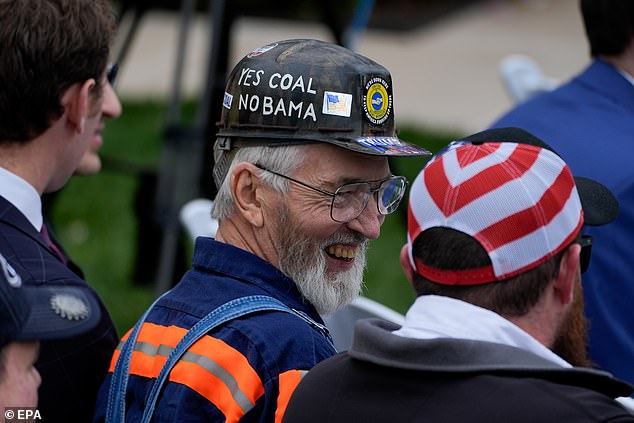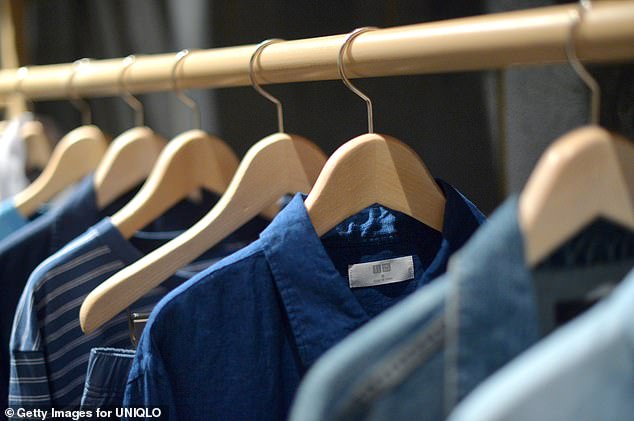- READ MORE: Mall staple receives a $663M boost... thanks to the owner of Toys R Us
- PODCAST: Trump’s ‘Freedom Day’ Tariffs, along with an unexpected push for the death penalty in the Luigi Mangioni case. Tune into Welcome to MAGAland here.
The era of cheap clothes shopping is rapidly drawing to an end. This decline begins as The shopping centers in America are already facing difficulties. .
On yesterday, President Donald Trump declared the initiation of retaliatory tariffs on products brought into the United States.
This policy imposes significant expenses on items produced in numerous countries. Among those most affected are five Asian nations, which house extensive manufacturing facilities for well-known American apparel brands, churning out affordable merchandise. These countries face duties as steep as 46 percent.
President Trump has consistently wished for the tariffs to encourage manufacturing employment within the U.S., shifting operations away from lower-cost international markets.
For shoppers, these duties will cause the costs of items like Nike Jordan sneakers, Adidas Samba shoes, and Lululemon trousers to soar dramatically. H&M and Zara apparel will similarly see increased retail tags. An item originally priced at $50 could rise by anywhere from $8 to $20 due to additional charges factored into the imports rather than directly reflected in the final shop price.
All these firms depend on major production centers located in Vietnam, Cambodia, Bangladesh, China, and Indonesia. Goods originating from these five nations have faced significant import duties ranging between 32% and 46%.
In total, this policy is anticipated to generate approximately $26 billion in tariffs from apparel items alone—companies must then determine whether they wish to absorb these costs or cease their operations within the U.S. market.

"The tariff increases implemented on April 2nd appear specifically designed to cripple the apparel sector," stated Dylan Carden, an analyst at William Blair based in Chicago.
Nike gets about half of its footwear and 30 percent of its clothing from Vietnam, whereas Adidas sources roughly 40 percent of its shoes from the same country.
In contrast, clothing manufacturing in the US is negligible.
Approximately 3.5 percent of Lululemon's products are manufactured in the United States. In contrast, H&M does not own any production facilities within the country.
In the previous year, there were 26,230 full-time sewing machine operators employed in the United States. Additionally, the U.S. Bureau of Labor Statistics reported that around 1,460 workers held positions as textile cutting machine operators in America.
This number of workers is insufficient to manufacture clothes for 340 million Americans.
For businesses that were already facing difficulties, the President’s tariffs combined with America’s shortage of apparel manufacturing facilities present a lose-lose situation. They must either absorb the additional expenses amid their recent challenges or impose these costs on consumers who are already contending with rising prices.
Prior to the tariff expenses, the United States was experiencing an unprecedented decline in the number of retail stores.


Experts predict approximately 15,000 outlets will close down this year. , which exceeds twice the record-breaking 7,000 store closings in 2024.
Multiple fast-fashion retailers, including Forever 21 , Billabong, and Quiksilver has recently filed for bankruptcy and revealed intentions to close down all of their outlets.
For American malls—which have become virtual ghost towns due to e-commerce and shifting consumer behaviors—incoming tariffs seem like an additional crushing blow for investors.
The stocks of clothing retailers have taken a hit following the tariff announcement.
During the early morning session of trading, Nike has declined by approximately 12 percent, Lululemon has fallen by roughly 13 percent, Crocs is down nearly 17 percent, and Vera Bradley has decreased by about 11.5 percent.
These losses also negatively affect American citizens: they signify substantial declines for numerous 401(k) plans .
Read more
Out Of Topic Show Konversi KodeHide Konversi Kode Show EmoticonHide Emoticon